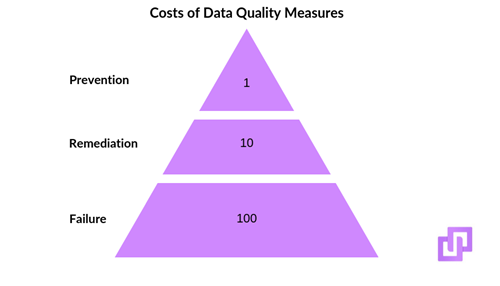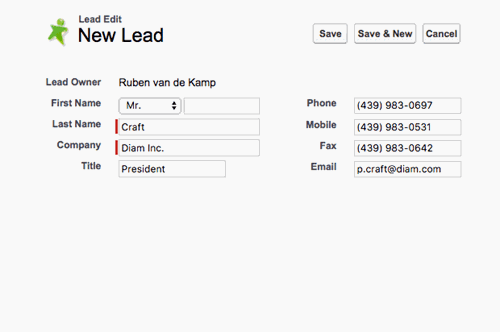Preventing Duplicates in Salesforce
According to Gartner, bad data is the number one reason for failed CRM implementations and the number one reason for organizations not reaching their goals. The effects of duplicates in a CRM are often first felt by sales and support teams. They lack a single customer view and take actions based on incomplete data, often resulting in bad customer experience. Imagine a sales rep following up on white paper download, only to find out later the lead already was a customer. The first thing businesses do when experiencing a duplicate problem is quick deduplication of the existing database. Duplicate Check will perform that task admirably. Organizations often skip implementing a duplicate prevention mechanism.
Why prevent duplicates?
Everyone who has a home knows it’s better to keep dirty boots outside than to vacuum each day. It’s the same with dirty data. Prevention is better than remediation.
Costs
As outlined in the famous 1-10-100 data quality management concept by G. Labovitz and Y. Chang, prevention is only one-tenth of the costs of remediation, and remediation itself is one-tenth of the costs of failure.

This intuitively makes sense. Running regular clean ups is much more time consuming than a one-time implementation of a prevention mechanism. Relying on remediation has the added chance of failure: the longer a duplicate is present, the higher the chance an action is performed on that duplicate. Think of a call, an email, the sending of a sample. The costs of this action and esulting fixes is again much higher than the cost of remediation.
Customer Experience
Imagine the reaction of an existing client that your company calls as if he’s a prospect. These kinds of actions hurt your relationship with that client. Imagine your support team asking questions that a client already answered earlier, again, this hurts the relationship with your client. Preventing these kinds of things is essential, and preventing duplicates is the way to achieve this.
Salesforce CRM adoption
As stated in our introduction, bad data is the number one reason CRM implementations fail. Why? When you have bad data, it leads to CRM users losing trust in the CRM. When users lose trust, they will fall back on whatever tools suit their individual needs. These can be different tools for different people, effectively ending all hope on a single customer view.
Choosing a solution
Now that you have realized the importance of preventing duplicates, the next step is to find a solution. You start by listing the objects you need duplicate prevention on and the methods the records for these objects enter your Salesforce. This list can look something like this:
Leads: Manual, Import, API
Contacts: Import
Cases: Email, Web 2 Lead
Your solution of choice has to handle these objects as well as entry methods.
To block or not to block, that is the question

One important thing to consider when choosing a prevention solution is the blocking of duplicates. The Salesforce Duplicate Management solution offers a prevention feature, but be aware: this feature blocks any duplicate from entering the system at all. This may not seem so bad at first, but all the information stored on this duplicate will not enter your system as well. Consider the following example: Your team has sponsored a conference and talked to and scanned a lot of leads. The scanning app allows you to download a CSV with all those leads. You import these leads in Salesforce. Since a number of those leads already existed in your database, these leads will not be imported. You are now missing the information that you talked to those leads at the conference. They are not added to your Salesforce campaign you created to measure results, as well.
Duplicate Check for Salesforce takes a different approach. We do not block upon entry. Instead, we instantly evaluate newly entered records and merge them if a duplicate already exists. With this approach, duplicates will not harm your business, and you will not lose any data as well.
Curious to see how this works? Schedule a demo with us, and we will show you and advise you on how to best tackle duplicate prevention for your organization.











